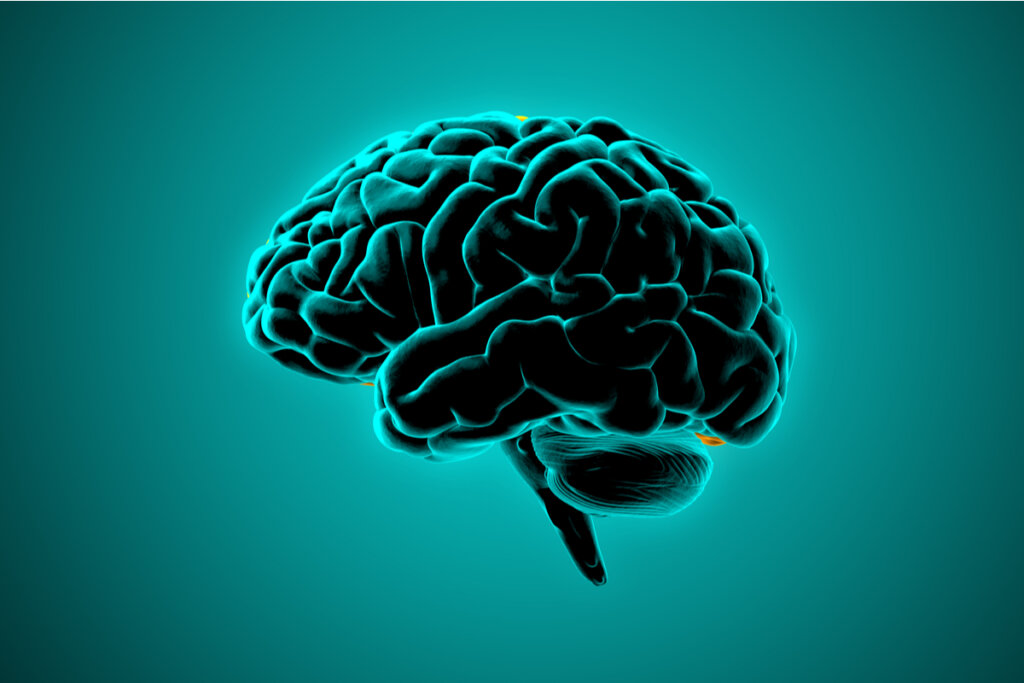Pain Asymbolia, The Complete Absence of Physical Pain


Written and verified by the psychologist Valeria Sabater
Pain asymbolia or pain disassociation is a disorder in which the person reacts abnormally to pain. The most common characteristic is not experiencing any discomfort, to the point of being able to tolerate rather dangerous situations. The origin of this alteration is neurological and, although it’s rare, it’s still very striking because it involves something as primary as pain.
It was in 1927 that Paul Schilder a psychoanalyst, and Erwin Stengel, a neurologist, first described this medical condition. The case is well-known. It involved a woman who injured herself with the sole intention of trying to understand what was happening to her. When she arrived for the medical consultation, her body was covered in wounds.
The patient was aware that her situation wasn’t normal, for which reason she was in despair. The doctors managed to deduce that perhaps she’d suffered a brain injury that had caused this sensory-type aphasia.
The fact of not experiencing pain is a serious alteration that can have extremely grave consequences. This is because pain serves a specific purpose in biology and in the act of survival itself. In fact, it alerts us to a problem, risk, or stimulus to which we must react…
Pain asymbolia is associated with an inability to react to physically damaging situations. Furthermore, the person doesn’t experience any emotional response. In other words, they lack the fear of risk and pain.

Pain asymbolia
Pain is one of the great mysteries of medicine, neuroscience, and psychology. To begin with, not all of us experience it in the same way. Indeed, there are more resistant people and there are those who show greater sensitivity. Furthermore, we know that, as we get older, the way we process pain changes. In fact, we become more vulnerable.
The origin of this condition is neurological. In fact, pain asymbolia has allowed us to better understand the reality of human pain.
Patients with this condition understand that certain objects and phenomena can be painful, such as fire. However, they don’t feel either pain or fear. For example, a person suffering from this neurological disorder would have no qualms about putting their fingers in a socket, even knowing that it would put their life at risk. This is undoubtedly the most unusual, curious, and striking aspect of this clinical disorder.
What symptoms does it present?
The Spanish Society of Pain conducted an extremely interesting study on pain reactivity disorders. Asymbolia is included in this category. We should mention that, since Paul Schilder and Erwin Stengel first described this condition in the early 20th century, little research has been conducted on the subject.
- As we’ve already mentioned, people suffering from pain asymbolia know very well what situations and objects are dangerous to them, even though they’re able to expose themselves to them without feeling any pain or discomfort.
- In many cases, they resort to self-harm due an attempt to understand their strange disorder. As a matter of fact, some are simply attempting to find a threshold where they can actually finally feel something.
- The authors of this study mention that some sufferers emit inappropriate responses to risky situations. For example, they might laugh when they put their hand in a fire.
- It’s important to note that pain asymbolia is often accompanied by other disorders, problems, or alterations. For instance, neurological deficits such as aphasias and apraxias or language disorders, or hemiparesis (loss of motor power on one side of the body due to brain injury) are common.

The origins of asymbolia
As we’ve seen, pain asymbolia manifests itself alongside multiple neurological deficits. These involve those relating to anomalies in the body schema, perception problems, and pain awareness. Furthermore, agnosic defects and subtle personality alterations are observed.
However, what determines this complex clinical reality?
- Until not long ago it was thought that the reason could be a lesion of the left lower parietal lobe.
- The Scandinavian magazine on care sciences published an interesting work in 2017. They considered that the disorder could originate inside the insula. This is the deep brain structure in which the temporal, parietal, and frontal lobes converge.
- This region isn’t only related to pain processing. It’s also key in emotional recognition and expression. Today, for example, it’s been seen that many people who suffer from borderline personality disorder also show small alterations in this structure.
- In addition, patients with pain asymbolia also show deficits in the activity of the amygdala. This is another region that not only regulates emotional aspects, but fear as well.
To conclude, there’s one more aspect that should be noted. In reality, pain asymbolia is just one more symptom of other complex problems that these patients usually exhibit. In fact, not feeling pain is always an obvious manifestation of the fact that there’s a latent neurological alteration…
All cited sources were thoroughly reviewed by our team to ensure their quality, reliability, currency, and validity. The bibliography of this article was considered reliable and of academic or scientific accuracy.
- Merskey, H., & Spear, F. G. (1967). The concept of pain. Journal of Psychosomatic Research, 11(1), 59-67
- Pantoula, Eleonora & Bscpsych, & Damigos, Dimitrios & Poulou, Aikaterini & Gouva, Mary. (2017). Original Article ”Symbolism of Pain: An Alternative Approach to Pain Means between Patients and Healthy Individuals”. Scandinavian Journal of Caring Sciences. 10. 1-153.
- Pilowsky, I., & Spence, N. D. (1976). Pain, anger and illness behaviour. Journal of psychosomatic research, 20(5), 411-416.
- Kim, S.Y., Kim, Y.Y. (2012). Mirror therapy for phantom limb pain. The Korean journal of pain.
- Schilder, P., Stengel, E. (1931). Asymbolia for pain. Archives of Neurology & Psychiatry.
This text is provided for informational purposes only and does not replace consultation with a professional. If in doubt, consult your specialist.








